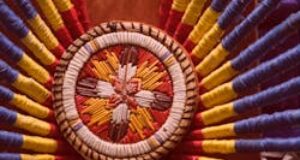
An updated evidence-based guideline aimed at helping clinicians and other health care providers manage patients with opioid use disorder recommends buprenorphine and methadone as first-line treatments. The guideline is published in CMAJ (Canadian Medical Association Journal). https://www.cmaj.ca/lookup/doi/10.1503/cmaj.241173
Opioid use and opioid use disorder are the leading causes of drug-related deaths worldwide, and Canada has seen a 184% increase is opioid-related deaths over 7 years from 2831 deaths in 2016 to 8049 deaths in 2023. Treatment options have improved with the removal of methadone prescribing restrictions in 2018 in Canada, but opioid-related harms continue to rise.
“Opioid use disorder and opioid related harms have devastating outcomes for our communities across Canada and with the growing dangers associated with the illicit market, we need to ensure we are sharing the most relevant therapeutic tools and up-to-date knowledge to help providers and communities address this complex issue,” says Dr. Ginette Poulin, a family physician, University of Manitoba, Winnipeg, Manitoba.
The guideline, an update to the 2018 national guideline for the clinical management of opioid use disorder from the Canadian Research Initiative in Substance Matters, focuses on oral treatments and includes special considerations for pregnant people. Injectable opioid agonist therapy, extended-release agonists, and antagonists are beyond the scope of this guideline.
The management of opioid use disorder is a rapidly changing and ever-evolving landscape of new research and clinical considerations. This guideline provides an important update to health practitioners on the latest science in the field so that Canadian providers can continue to maintain a high standard of evidence-based care.”
Dr. Igor Yakovenko, lead author, associate professor, Department of Psychology and Neuroscience and Department of Psychiatry, Dalhousie University, Halifax, Nova Scotia
The recommendations, based on new research since the previous guideline was published, include the key change that opioid agonist treatment with buprenorphine–naloxone is no longer the sole first-line treatment and methadone is now also recommended as a first-line option.
The update is aimed at physicians, nurse practitioners, pharmacists, clinical psychologists, social workers, medical educators, clinical care case managers with or without specialized experience in addiction treatment, and other allied health care professionals who provide care for people with opioid use disorder.
Key recommendations:
- Buprenorphine (also refers to buprenorphine–naloxone) and methadone can be used as standard first-line treatment options for opioid agonist therapy
- Slow-release oral morphine can be used as second-line treatment
- Avoid withdrawal management as stand-alone treatment and ensure long-term management to ensure safety and well-being of people with opioid use disorder
- Psychosocial treatments and supports, such as therapy, should be offered as additional approaches but should not be mandatory nor prevent access to opioid agonist therapy
- Pregnant people can be offered buprenorphine or methadone as treatment options
The authors hope that the guideline will provide evidence-based treatment for opioid users and recommend that provinces update their approaches to managing opioid use disorder to help Canadians.
“Too many people die from untreated opioid addiction in Canada,” says Dr. Peter Selby, Centre for Addiction and Mental Health and the University of Toronto. “We have medicines that help people stop using but too few are treated due to stigma and lack of prescribers knowing what to do. These national guidelines help them use proven medications to not only prevent death but actually help people recover.”
Source:
Journal reference:
Yakovenko, I., et al. (2024) Management of opioid use disorder: 2024 update to the national clinical practice guideline. CMAJ. doi.org/10.1503/cmaj.241173.




